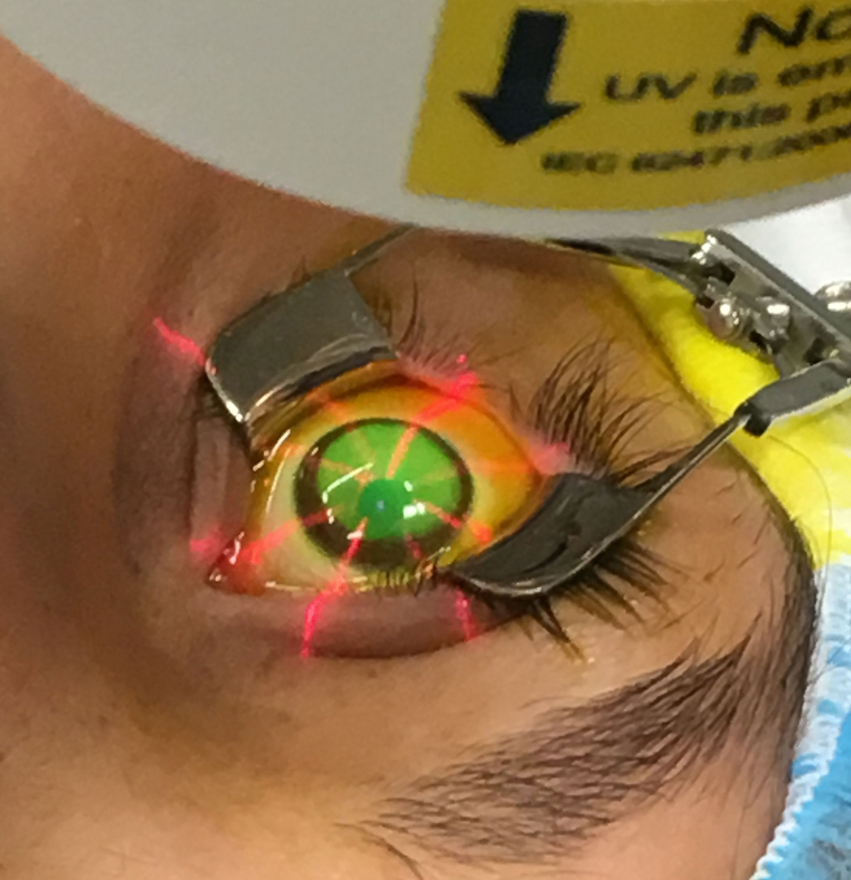 |
| This method of accelerated crosslinking had good outcomes in patients with thinner corneas. Photo: Glaukos. Click image to enlarge. |
Researchers recently reported positive three-year results of an accelerated, epi-on crosslinking protocol using a three-minute exposure of 30mW/cm2 UVA irradiation. Accelerated epi-on crosslinking addresses a number of the conventional epi-off protocol shortcomings such as treatment time, stromal damage and patient discomfort.
The prospective, interventional study included 34 eyes of 23 patients with progressive keratoconus who underwent the accelerated protocol. At three years, the researchers reported no significant change in mean Kmax, average corneal power, steepest corneal power, UCVA, BCVA or endothelial cell density. Linear regression analysis demonstrated a slowing of disease progression. Two eyes required a redo due to progression after primary crosslinking.
“Accelerated transepithelial crosslinking with 30mW/cm2 UVA irradiation for three minutes is safe and effective for slowing down keratoconus progression, even in a long-term follow-up,” the researchers concluded. They noted in their paper that their protocol was equally effective in stopping deterioration of visual acuity and keratometric and pachymetric parameters as accelerated epi-on 45mW/cm2 UVA irradiation exposure for five minutes and 20 seconds.
They noted that their three-minute protocol is “worth considering” for cases in which epi-off procedures may be too risky, such as in patients with advanced keratoconus and thin corneas.
Ishii H, Yoshida J, Toyono T, et al. Three-year results of accelerated transepithelial cross-linking (30mW/cm2 x 3 min) for keratoconus: a prospective study. BMJ Open Ophthalmol. January 21, 2022. [Epub ahead of print]. |

